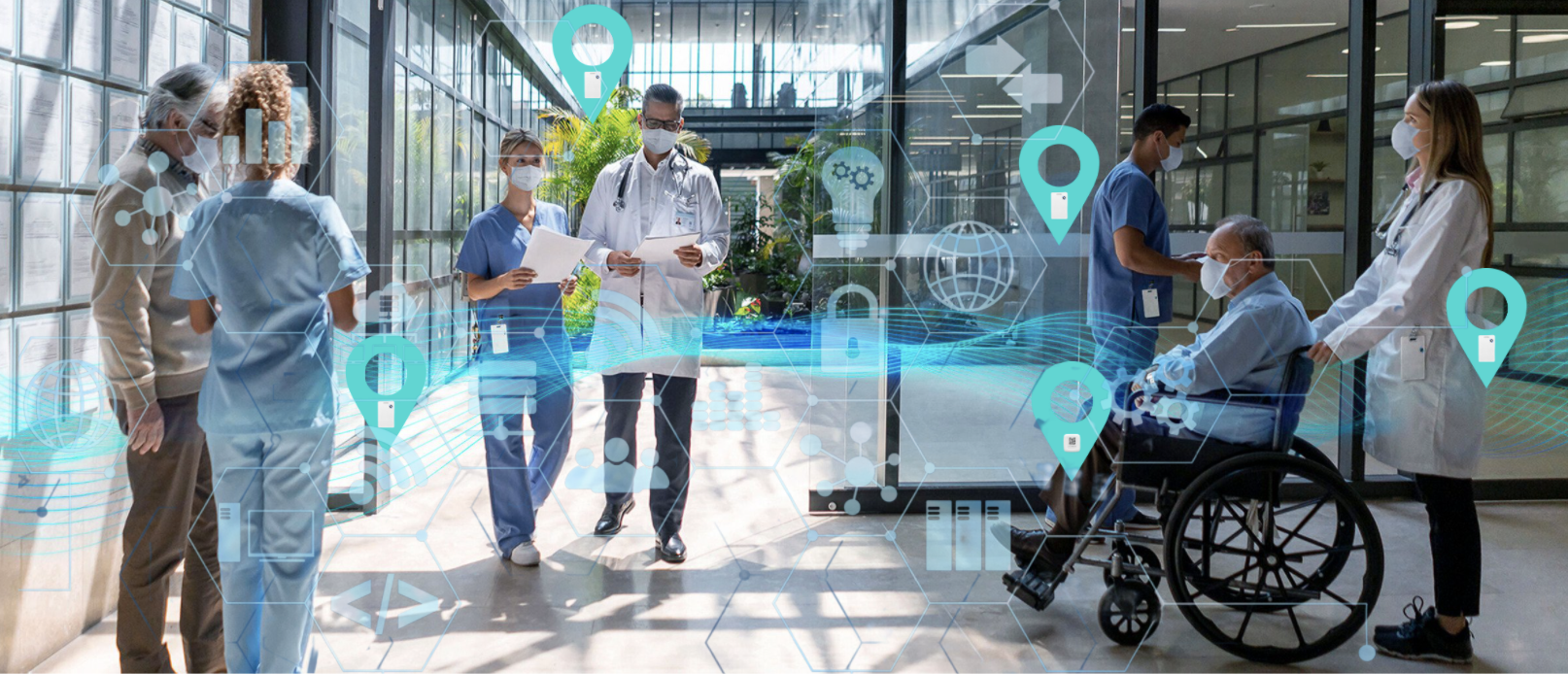The convergence of Real-Time Location Systems (RTLS) and predictive analytics represents a significant paradigm shift in healthcare operations. While traditional RTLS implementations provide valuable visibility into current asset, staff, and patient locations, the integration of predictive analytics transforms this real-time data into forward-looking actionable intelligence. This powerful combination enables healthcare organizations to anticipate needs, prevent bottlenecks, optimize resource allocation, and ultimately transition from reactive to proactive operational models.
The Evolution of RTLS Intelligence
The journey from basic RTLS implementation to predictive analytics capabilities typically progresses through four distinct stages of operational intelligence:
| Intelligence Stage | Primary Function | Operational Focus | Data Orientation | Example Applications |
|---|---|---|---|---|
| Descriptive | Provides information about current state | What is happening now? | Present | Asset location visibility, Patient tracking, Staff movement visualization, Current equipment utilization |
| Diagnostic | Analyzes historical patterns to explain events | Why did it happen? | Past | Root cause analysis of delays, Historical utilization patterns, Workflow bottleneck identification, Equipment usage trends |
| Predictive | Forecasts future events based on patterns | What will happen next? | Future | Equipment demand forecasting, Patient volume prediction, Bottleneck anticipation, Staff requirement projections |
| Prescriptive | Recommends actions to optimize outcomes | How can we make it happen? | Future + Action | Automated PAR level adjustment, Dynamic staff reallocation, Preventive maintenance scheduling, Proactive patient flow management |
Healthcare organizations typically begin with descriptive intelligence, using RTLS for basic visibility, before progressing to more sophisticated applications that allow for predictive and prescriptive intelligence.
Key Applications of Predictive Analytics with RTLS
The integration of predictive analytics with RTLS data enables numerous high-value applications across healthcare operations. These applications translate location intelligence into actionable insights that anticipate needs and prevent problems before they occur:
Asset Management Transformation
Predictive analytics transforms asset management from a reactive search-and-respond model to a proactive system that anticipates equipment needs. By analyzing historical usage patterns, seasonal variations, and correlations with scheduled procedures, the system can forecast equipment demand with remarkable accuracy. This enables automated PAR level adjustments based on predicted needs, proactive redistribution of equipment before shortages occur, and strategic rental decisions that minimize costs while ensuring availability during peak demand periods.
Workflow Optimization
Predictive analytics can identify patterns in patient movement, staff workflows, and departmental throughput to anticipate bottlenecks before they impact operations. By combining historical RTLS data with current conditions, the system predicts areas of congestion, resource constraints, and potential delays, enabling proactive intervention. This capability allows for dynamic staff reallocation based on predicted demand, preemptive adjustment of schedules and resources, and optimization of patient throughput across departments.
Staff Allocation and Scheduling
The combination of RTLS data and predictive analytics transforms staff management from reactive scheduling to proactive workforce optimization. By analyzing historical patterns of patient volume, acuity, and movement alongside staffing levels and outcomes, the system can predict optimal staffing requirements with greater precision than traditional methods. This enables dynamic adjustment of staffing levels based on predicted demand, personalized scheduling that accounts for individual staff efficiency in different locations, and workload balancing that prevents burnout while maintaining care quality.
Patient Flow Intelligence
Predictive analytics enhances patient flow management by forecasting admission volumes, discharge patterns, and internal movement trends. This enables proactive bed management based on predicted discharges and admissions, early identification of potential discharge barriers, and optimization of patient placement decisions based on predicted length of stay and care needs.
Future Directions for Predictive RTLS Analytics
As technology and implementation maturity continue to advance, several emerging trends will further enhance the value of predictive RTLS analytics in healthcare:
Multi-facility Intelligence: Expanding predictive capabilities across healthcare systems to enable load balancing and resource sharing between facilities based on predicted demand and capacity constraints.
Artificial Intelligence Integration: Advancing from basic predictive models to sophisticated AI that can identify complex interrelationships between multiple variables and provide increasingly accurate forecasts.
Real-time Predictive Simulation: Enabling operational leaders to run “what-if” scenarios based on current conditions and potential interventions to evaluate likely outcomes before implementation.
The integration of predictive analytics with RTLS represents a fundamental evolution in healthcare operations—transforming location data from a retrospective tool into a forward-looking operational intelligence platform. Organizations that successfully implement these capabilities gain significant competitive advantages through improved resource utilization, enhanced staff efficiency, optimized patient flow, and ultimately, better care delivery. As healthcare continues to face resource constraints and efficiency pressures, the shift from reactive to proactive operations enabled by predictive RTLS analytics will become increasingly essential for operational excellence.

